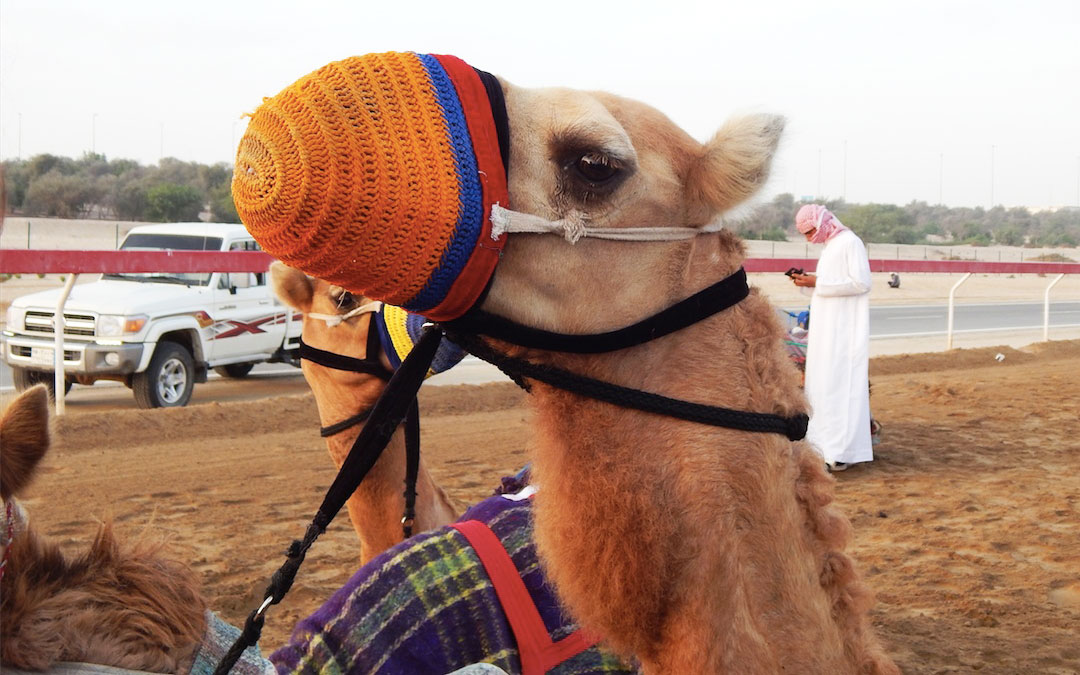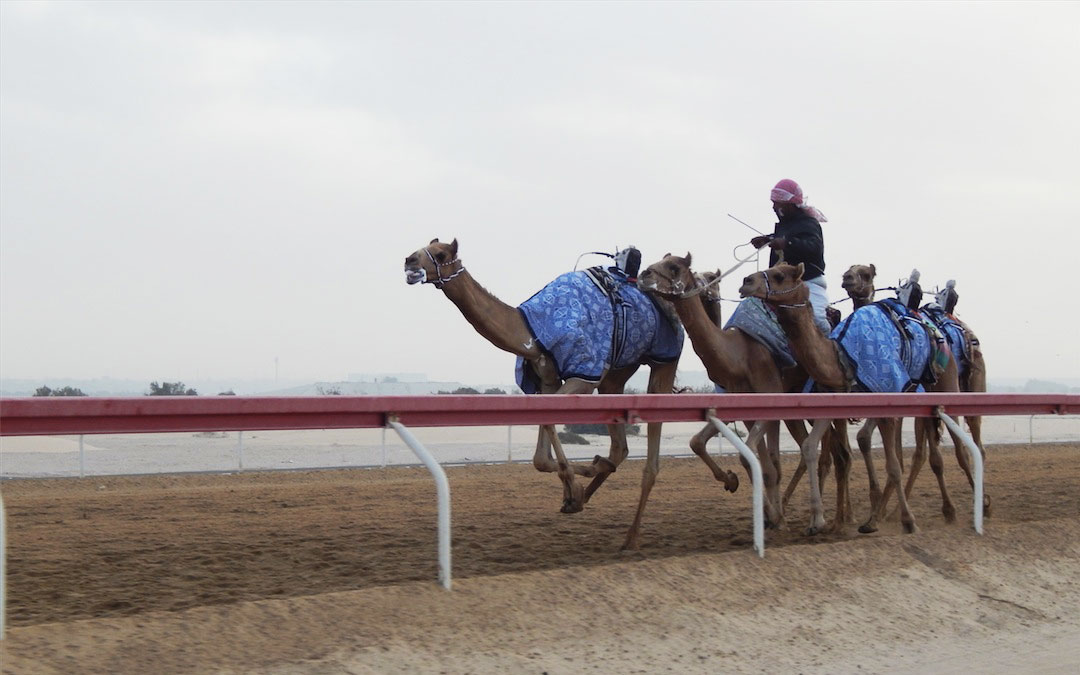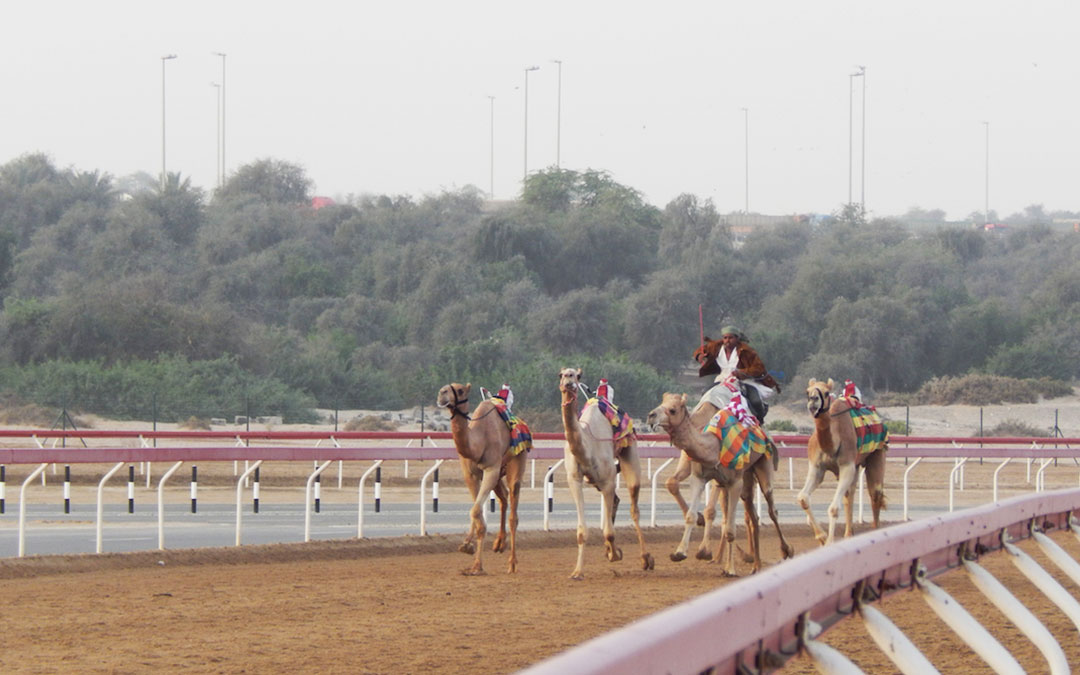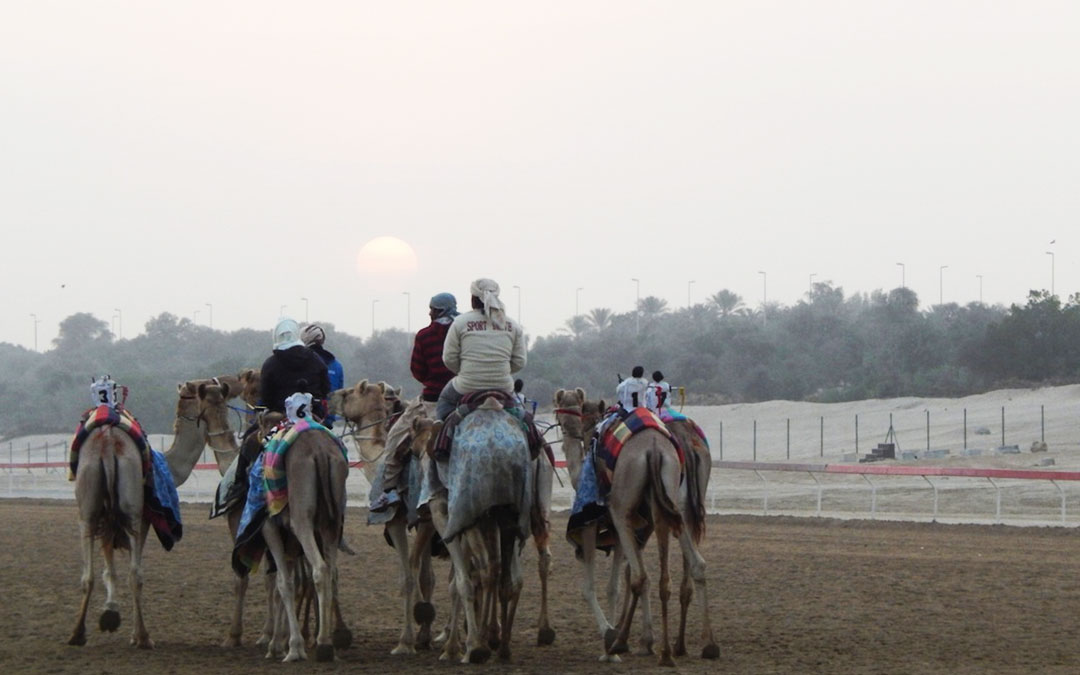6.09 a.m. The bus took off, rolling out of Saadiyat carrying a bunch of yawning faces that were already snuggling in for a bit of sleep before Al Wathbah came into view. The sun had perched itself on the horizon, slowly rising with the patterned clouds as herders brought in their groups of color-coordinated camels.

Ever since the country banned child jockeys, camels in the UAE have been ridden by robotic jockeys. The robot riders are small and hard to notice from a distance, especially when the camels are racing. They are usually dressed in colored shirts with little caps, and each has a whip in hand controlled by a herder outside the track.
On the Al Wathbah track, each group of camels had a single herder, with robot riders already on some of the camels’ backs.
“It reminded you of how the times are moving forward and the fusing of different cultures into one another,” said freshman Kyler Meehan. “It was a really cool experience to hop on the back of the trucks and run along with slobbering camels … it felt funny because we still felt like tourists, in a sense.”

Alex Heald, Student Life Coordinator at NYU Abu Dhabi, explained that his office arranges various activities to help students engage with the local culture.
“We also had NYU New York and NYU Shanghai students here for the January Term and it’s great to give them a taste of the culture because they are only here for a couple of weeks,” said Heald. “I felt that this would be a unique way of getting a new perspective on Abu Dhabi and the UAE.”
He also added that January provided the perfect weather for experiencing a camel race.
Amongst the clusters of camels, several young camels left the lounging group to venture up the track alone. A few NYUAD students who were studying Arabic began conversing with the nearby herders and, consequently, were able to finagle a way to sneak onto the track.
Freshman Mulindi Cynthia said she was impressed with the herders and riders, who rely on camels for their careers. She compared it to her experiences at home and said seeing camels was a refreshing change from the vast amounts of cows that she is used to back home in Rwanda.

After a while, the camels started running down the track with their groups. One of the younger camels seemed a bit confused as he started crossing the track, waiting for others to pass in the middle of the road before continuing to find his way.
The entire track ran for 9 km, and some of the students were able to hop on to the backs of pickup trucks and feel the wind sweeping past their faces while rhythmic camel feet raced towards them. After the second round of pickup trucks, it was time to head out alongside the purple-clad line of 100 or so camels on their way out.

Sophomore Hana Al Ameri stressed the importance of camels to UAE culture, especially in relation to her Bedouin heritage.
“I remember for [the official National Day festival] once, there were two separate entrances,” she said. “One for the festival and one for the races. That’s how important it is.”
In addition to races, camels have been used for transportation, milk and meat, and are even contestants in the occasional camel beauty pageant.
Originally published by ‘The Gazelle’, an NYUAD student publication on 7th February, 2015. https://www.thegazelle.org/issue/55/camel
